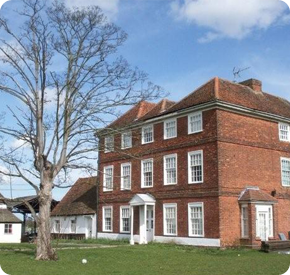A late fourteenth-century gatehouse and a close-by archaic extension are on the whole that survives from the extraordinary convent established by the Saxon King Harold. The door was underlying 1369 and framed the fundamental access to the monastery region. The manufacturers utilized a blend of stone and blocks and made an enormous focal entryway for ponies and trucks, and a more modest entryway for walkers. The door was finished off with turrets on the two sides and may have had an upper story, yet no hint of this currently remains. Quickly toward the south of the passage is a divider made with middle age Essex blocks, made locally, and among the best instances of early archaic blocks in England. It roughly requires 7 minutes of travel from the Honey path Care Homes Waltham Abbey .
The Gatehouse
The monastery gatehouse is situated behind the order range. From the monastery church, you can follow Rome Lane (the path to one side as you remain outside the congregation’s west entryway) until the gatehouse materializes to your right side, or cross the shelters behind the west finish of the congregation (by King Harold’s Stone) and you will see the gatehouse behind the high block facade to your left side.
The Bridge

To the furthest extent that we could decide the scaffold isn’t signposted – it would have been much simpler to discover if it was! From the gatehouse follow the way close to Cornmill Stream until you go to a little scaffold to your left side. Go through into the following field and you can see an iron railing away to one side. Cross the field to the railing and you will want to see the extension without any problem. There are no data plaques on this side of the stream to educate you concerning the extension, which is a genuine disgrace.
Visiting the abbey site
However, English Heritage saves the door and extension – and just notices these properties on their site – there is entirely a smidgen a greater amount of the monastery safeguarded. The blueprint of the shelters is not difficult to make out, similar to the night step utilized by priests to go from their residence to the monastery church.
A vaulted section connecting the shelters with the step gets by, as does a scope of high dividers that shaped piece of Abbey House, a manor worked by Sir Edward Denny after Waltham Abbey was broken down by Henry VIII in 1540 – the last ascetic house to be given up to the Crown. Oh, the manor is no more; it was destroyed in 1770. Cut framing from Abbey House is protected in the Epping Forst District Museum, a short walk away on Sun Street.
The Abbey gatehouse and scaffold are available to access whenever. I can energetically prescribe a visit to the congregation, however regardless of whether the congregation is shut you can, in any case, see the rumoured site of King Harold’s grave, set apart by a low plinth and a square of stone past the east finish of the congregation. The best spot to stop is in the free Abbey Gardens stopping region off the B194 (Crooked Mile Roundabout).




